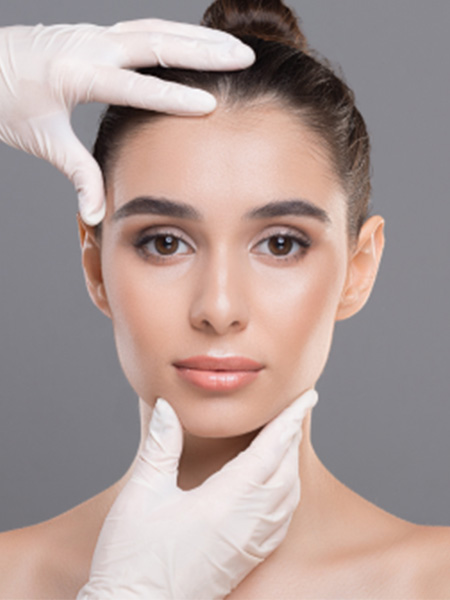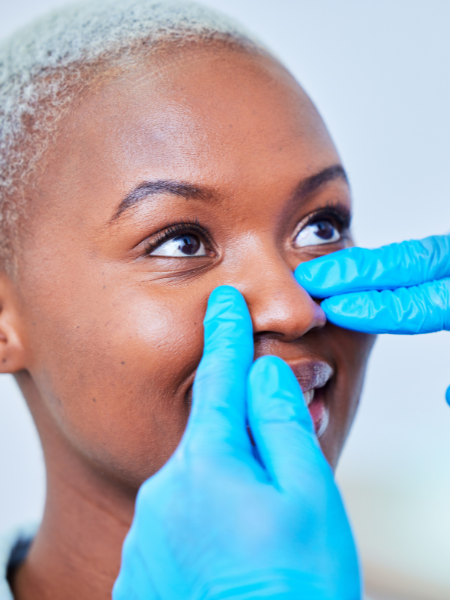
The Essential Guide to Rhinoplasty: What Every Patient Should Know
Rhinoplasty, commonly referred to as a “nose job,” is a surgical procedure that has gained immense popularity over the years. It’s not just about aesthetics; rhinoplasty can also address functional issues, such as correcting a deviated septum that can obstruct breathing. This surgical transformation of the nose can have a profound impact on a person’s self-esteem and overall quality of life.
However, before you embark on this journey, it’s crucial to be well-informed. In this comprehensive guide, we’ll take you through every aspect of rhinoplasty, from understanding the procedure to recovery and managing expectations.
Understanding Rhinoplasty
What is Rhinoplasty?
Rhinoplasty is a surgical procedure that involves reshaping the nose to enhance its appearance or improve its function. It can be performed for cosmetic reasons to address aesthetic concerns such as a crooked nose, a hump on the bridge, or a bulbous tip. Alternatively, rhinoplasty can be done for functional purposes, such as correcting a deviated septum to improve breathing. The goal is to create a harmonious and balanced nose that complements your facial features.
Reasons for Rhinoplasty
Rhinoplasty serves a dual purpose, addressing both aesthetic and functional concerns.
Aesthetic Improvements:
- Correcting the size and shape of the nose.
- Refining the nasal tip.
- Eliminating humps or depressions on the bridge.
- Enhancing facial symmetry.
- Improving overall facial harmony.
Functional Purposes:
- Correcting a deviated septum that hinders breathing.
- Alleviating chronic nasal congestion.
- Resolving snoring and sleep apnea issues.
- Repairing nasal injuries or deformities.
Preparing for the Surgery
Initial Consultation
The first step in your rhinoplasty journey is the initial consultation with a plastic surgeon. During this crucial meeting, you will discuss your goals, expectations, and medical history. Be prepared to ask questions and express your concerns openly. It’s essential to establish clear communication with your surgeon to ensure that your desires align with what can realistically be achieved through rhinoplasty.
Physical and Mental Preparation
Physical readiness involves undergoing necessary medical tests and evaluations to ensure you are a suitable candidate for the surgery. Your emotional readiness is equally important. Understand that the transformation rhinoplasty offers is not just physical but also emotional. Set realistic expectations for the surgery’s outcome and recovery process.
Financial Planning
Rhinoplasty costs can vary widely based on factors such as the surgeon’s experience, location, and the complexity of the procedure. It’s essential to have a clear understanding of the costs involved, including surgeon fees, facility fees, anesthesia fees, and any potential additional expenses for post-operative care. Check with your insurance provider to see if any portion of the surgery may be covered under specific circumstances, such as functional issues. Additionally, explore financing options if needed.
The Procedure: Step by Step
Types of Rhinoplasty
There are two primary techniques used in rhinoplasty: open and closed procedures.
Open Rhinoplasty: Involves making an incision on the columella (the strip of skin separating the nostrils) to provide better visibility and access to the nasal structures. This technique is often preferred for complex cases.
Closed Rhinoplasty: Involves incisions made within the nostrils, which leaves no external scarring. Closed rhinoplasty is typically used for less complex cases.
In some instances, patients may require secondary or revision rhinoplasty to address issues that persist after the initial surgery.
The Day of Surgery
On the day of your rhinoplasty, you will be asked to arrive at the surgical facility early in the morning. You’ll receive instructions
Guide to Rhinoplasty – Park Facial Plastics
on how to prep for surgery to ensure you are comfortable and relaxed for the operation.
The surgical procedure typically involves the following steps:
- Incisions according to the chosen technique.
- Reshaping the nasal structures, including the bones and cartilage.
Closing the incisions with sutures or dissolvable stitches.
Application of a splint or cast to support the new nasal shape.
Anesthesia and Safety Measures
Rhinoplasty is typically performed under either local anesthesia with sedation or general anesthesia. The choice depends on the complexity of the surgery and your surgeon’s recommendation. Anesthesia ensures that you are comfortable and pain free during the procedure. Patient safety is a top priority, and your surgical team will monitor you closely throughout the surgery.
Post Surgery: Recovery and Care
Immediate Aftercare
After the surgery, you will spend some time in a recovery area before being discharged. The duration of your hospital stay depends on your surgeon’s recommendations and the extent of the procedure. You can expect some initial post-operative symptoms, including swelling, bruising, and mild discomfort. Your surgeon will provide instructions on how to care for your incisions and manage these symptoms.
Home Recovery Tips
Recovery from rhinoplasty takes time, and it’s essential to follow your surgeon’s guidance closely. Here are some tips for a smoother recovery:
- Rest and avoid strenuous activities.
- Keep your head elevated to reduce swelling.
- Use cold compresses to alleviate swelling and bruising.
- Follow a prescribed pain management plan.
- Avoid blowing your nose or engaging in activities that could put pressure on the nose.
- Maintain proper wound care and cleanliness.
Managing Side Effects and Complications
During the recovery process, you may experience side effects, such as swelling, bruising, and mild pain. It’s essential to differentiate between normal symptoms and potential complications. Contact your surgeon if you notice any concerning signs, such as excessive bleeding, severe pain, or signs of infection. Your surgeon will provide guidance on when to seek medical attention.
Long-Term Care and Recovery
Following the initial recovery period, you’ll need to see your surgeon for follow up appointments to monitor your progress. These appointments are essential to ensure that your nose heals correctly and to address any concerns that may arise. Long term care also involves protecting your nose from trauma and maintaining the results of your rhinoplasty.
Realistic Outcomes and Setting Expectations
Understanding Final Results
It takes a while for the full results of rhinoplasty to become apparent. It’s important to understand that the initial swelling and bruising will gradually subside, revealing the final outcome. However, the timeline for this does vary from person to person. Be patient and allow your nose to heal naturally. Keep in mind that while rhinoplasty can provide remarkable improvements, there may still be subtle imperfections that make your nose unique.
Handling Dissatisfaction
If you are dissatisfied with the results of your rhinoplasty, it’s essential to communicate openly with your surgeon. They can evaluate the issue and discuss potential revision options if necessary. Handling dissatisfaction also involves emotional coping strategies, as unrealistic expectations can lead to disappointment. Seek support from friends, family, or a therapist to navigate the emotional aspects of the process.
Conclusion
Rhinoplasty is a transformative procedure that offers both physical and emotional benefits. However, it is not a decision to be taken lightly. Thorough research and preparation are essential to ensure a successful outcome. By understanding the procedure, preparing both physically and emotionally, and managing your expectations, you can embark on your rhinoplasty journey with confidence and realistic goals.
If you are considering rhinoplasty, we encourage you to schedule a consultation with us. We can provide personalized guidance and answer any specific questions or concerns you may have.
Additionally, if you have undergone rhinoplasty at Park Facial Plastics, we invite you to share your experiences and questions in the comments below. Your insights and inquiries can help others on their own rhinoplasty journey.





